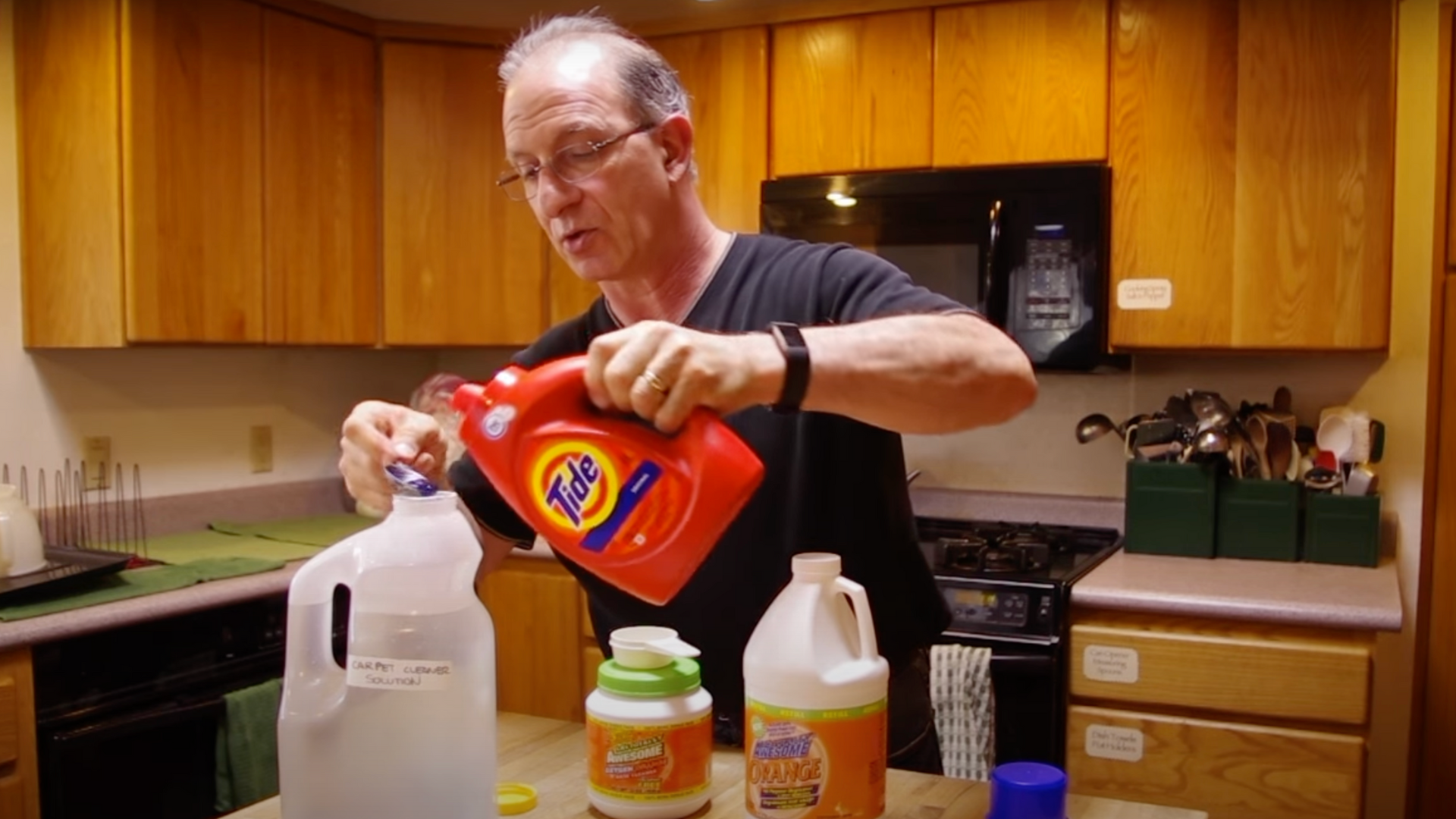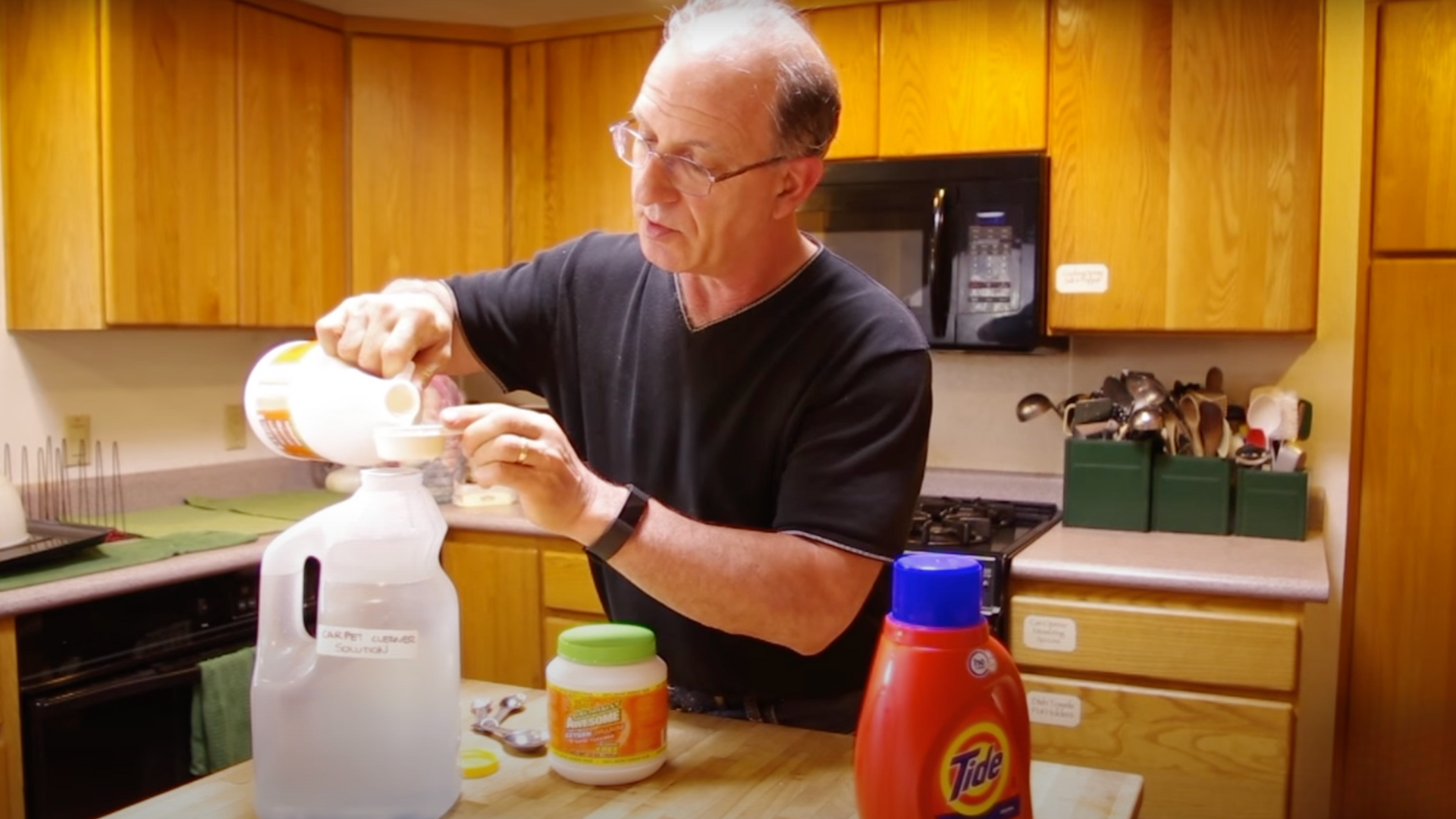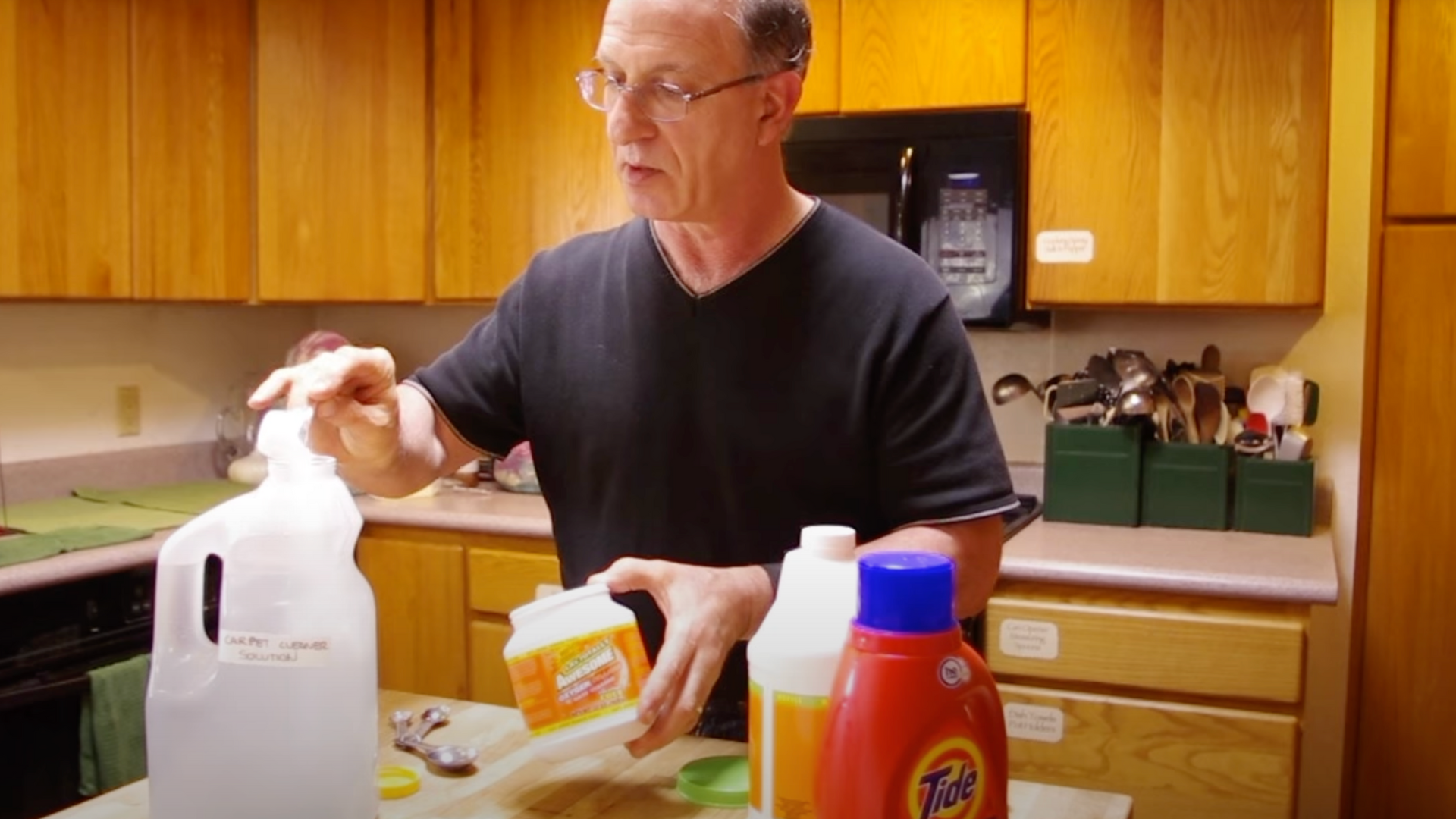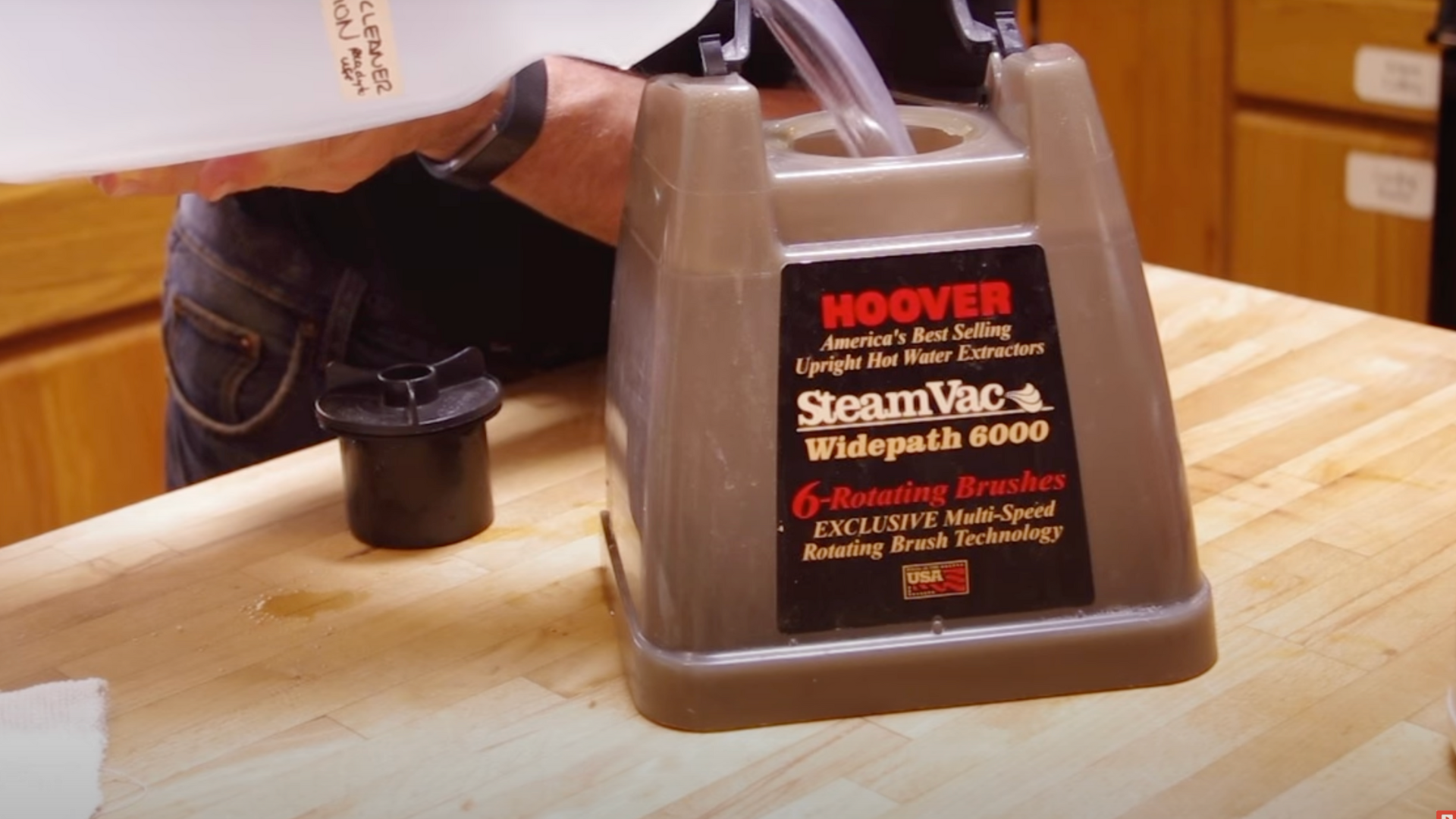Cleaning your carpet shouldn’t cost a fortune or fill your home with harsh chemicals.
When I first tried homemade solutions in my carpet cleaner, I wasn’t sure what to expect, but I was amazed by the fresh, clean results and how much money I saved.
If you have a carpet cleaning machine and want a safer, more budget-friendly option than store-bought formulas, you’re in the right place.
I’ve tested several recipes and learned what really works.
In this guide, I’ll share simple, effective homemade carpet cleaning solutions, helpful ingredient tips, and machine-safe techniques.
With items you likely already have at home, you can get pro-level results and make your cleaning routine easier and healthier.
Why Choose a Homemade Carpet Cleaner?

Using a homemade carpet cleaner has been a game-changer for me. First, it saves a ton of money; those brand-name cleaning solutions can add up, especially if you clean regularly.
Second, I know exactly what’s going into my home. No harsh fumes or mystery chemicals, just simple ingredients I can trust.
Additionally, I can tailor my mix to meet my specific needs. Got pet stains? I can add vinegar. Need to tackle odors? Baking soda or essential oils do the trick.
Homemade solutions offer flexibility, peace of mind, and effectiveness, eliminating the need for store-bought products.
It’s a cleaner way to clean your carpets (and wallet), which will thank you for it.
Understand Your Carpet Cleaner Before You Start
Before you pour any homemade mix into your carpet cleaning machine, it’s important to know how your machine works. A few simple checks can help you avoid damage and get better results.
- Check the manual first: Some machines can’t handle ingredients like vinegar, dish soap, or essential oils. These can be too thick, foamy, or acidic.
- Look at the tank setup: Some machines have separate tanks for clean water and solution, while others need everything pre-mixed in one.
- Avoid clogs and damage: Using the wrong ingredients or setup can hurt the motor or spray system.
- Don’t forget the rinse cycle: Homemade mixes, especially with baking soda or soap, may leave residue that attracts more dirt.
- Rinse with clean water: This keeps both your carpets and your machine in good shape.
Taking a few minutes to learn about your machine can save you time, effort, and repairs down the line.
Step-by-Step: Homemade Carpet Solution for Machines
Make a powerful, budget-friendly carpet cleaner for your machine using simple household ingredients. This easy guide leaves your carpets fresh, clean, and chemical-free.
Materials You’ll Need
- Hot Water: Helps dissolve all cleaning ingredients and enhances the solution’s ability to break down dirt.
- Non-Bleach Laundry Detergent: Adds a pleasant scent and lifts soil and grime from carpet fibers.
- Multi-Purpose Cleaner: Acts as a degreaser and boosts stain-fighting power against tough spots.
- Oxygen-Based Cleaner: Uses oxygen action to brighten carpets and help lift stubborn stains.
- Dish Soap and Hydrogen Peroxide: Works as a pre-treatment to break down set-in stains before machine cleaning.
Step 1: Put Laundry Detergent in Hot Water

Start by filling a clean container with one gallon of very hot water. Add two tablespoons of a non-bleach liquid laundry detergent to the hot water.
This detergent helps lift dirt, grime, and general buildup from carpet fibers while leaving behind a fresh scent.
Choose a low-foaming formula if possible to prevent excess suds in your machine.
Step 2: Mix in a Multi-Purpose Cleaner

Pour in 1/4 cup of a general-purpose household cleaner. This type of cleaner acts as a degreaser, breaking down stubborn dirt and residues that are embedded deep in the carpet.
Since these cleaners are often concentrated, they pack strong cleaning power in small amounts.
Step 3: Add an Oxygen-Based Booster

Scoop in one whole serving (as directed on the container) of an oxygen-based stain remover powder.
This product releases oxygen when mixed with water, helping to lift stains and brighten your carpet naturally. It also works well on organic stains, such as food, drink, or pet messes.
Step 4: Pour the Mixture into the Machine and Clean

Now it’s time to pour your DIY mix into the Rug Doctor’s solution tank. Make sure everything is dissolved and no powder remains at the bottom.
Begin cleaning the carpet, moving slowly to let the machine extract both dirt and moisture thoroughly.
You’ll end up with clean, fresh-smelling carpets, without the high price of commercial solutions.
Recommended: Want to see how this homemade carpet cleaner works in real time? Watch the full video below for a step-by-step walkthrough. Hit play and follow along!
Tip: Adding a few drops of essential oils like lavender, lemon, or tea tree to your homemade carpet cleaner can boost freshness and offer light antibacterial benefits. It’s an easy, natural way to enhance scent and cleanliness.
How Homemade Solutions Compare to Store-Bought Cleaners
Homemade carpet cleaning solutions and store-bought formulas both have their pros, but they serve different needs. I’ve tested both over the years, and here’s how they really stack up.
| Feature | Homemade Solution | Store-Bought Cleaner |
|---|---|---|
| Cost | Very low; often under $2 per gallon | Higher, typically $10–$25 per bottle |
| Ingredients | Simple household items like detergent and vinegar | Proprietary blends with chemicals and fragrances |
| Effectiveness | Highly effective for general cleaning and deodorizing | Strong on tough stains, but may leave residues |
| Safety for Kids/Pets | Can be customized to be non-toxic | Some may contain harsh chemicals or allergens |
| Scent Control | Fully customizable based on preferences | Pre-set fragrances may be overpowering |
| Machine Compatibility | Safe if diluted properly and used with a rinse cycle | Specifically formulated for machine use |
| Environmental Impact | Low; fewer synthetic chemicals and less packaging | Higher, more waste and chemical runoff |
| Residue Left Behind | Minimal if rinsed well | Can leave sticky residue, attracting new dirt |
| Availability | Always available with pantry staples | Requires store purchase or online ordering |
| Shelf Life | Shorter; best made fresh | Longer, designed for storage |
Mistakes to Avoid with Homemade Solutions
Learn which common DIY carpet cleaner mistakes to avoid, from unsafe ingredient combos to cleaning habits that can leave residue or damage your machine and carpet.
- Never mix bleach and vinegar: This combination produces toxic chlorine gas.
- Avoid foaming detergents: Excessive suds can clog your machine and be difficult to rinse out.
- Don’t use too much solution: Over-saturating carpets can lead to mold or mildew.
- Skip overly abrasive ingredients, such as salt or hydrogen peroxide, on dark carpets, as they can cause discoloration.
- Failing to test first: Always spot-test a small area before cleaning the entire carpet.
Tips for Best Results with DIY Solutions
Maximize the effectiveness of your homemade carpet cleaner with these practical tips for enhanced cleaning, faster drying, and longer-lasting freshness in every room.
- Vacuum thoroughly first: Remove loose dirt so your cleaner reaches deep-down grime.
- Use warm (not hot) water: It helps activate ingredients without damaging fibers.
- Work in small sections: Ensures even cleaning and better extraction.
- Rinse with clean water: Removes leftover cleaner and avoids sticky residue.
- Dry carpets completely: Use fans or open windows to prevent musty smells.
Conclusion
Trying DIY carpet cleaning solutions might feel like a leap at first, especially when you’ve invested in a machine. I totally get it.
But once I started mixing my own, I was surprised at how simple and effective they were.
You get to choose the ingredients, skip the harsh chemicals, and save a good bit of money along the way.
Plus, your home smells fresher and feels cleaner without all the mystery additives.
If you’re ready to give homemade a try, I’d suggest starting with the vinegar and baking soda combo; it’s worked wonders for me.
And, by the way, if you tweak a recipe or discover something new, I’d love to hear about it. Let’s keep our homes clean, naturally.
Want more cleaning hacks? Stick around, I’ve got plenty to share!
Frequently Asked Questions
How often should I deep clean carpets?
Every 6 to 12 months is ideal, but high-traffic areas or homes with pets may need more frequent cleanings.
Can essential oils damage carpet fibers?
When used sparingly, essential oils are safe. Always dilute and test on a hidden area first to prevent staining or residue.
Will homemade carpet cleaners void my machine’s warranty?
Some warranties require brand-name solutions. Check your machine’s manual before using homemade cleaners to avoid issues.
Do homemade solutions remove old stains?
They can, especially when paired with pre-treatment. However, older or set-in stains may require repeated cleaning or professional help.
Can I store leftover homemade solution?
Yes, store it in a sealed container away from sunlight. Shake before use and use within a few weeks for best results.

